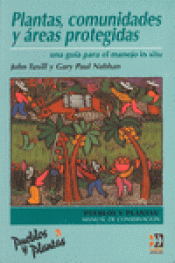



Books
What a Mushroom Lives For pushes today’s mushroom renaissance in compelling new directions. For centuries, Western science has promoted a human- and animal-centric framework of what counts as action, agency, movement, and behavior. But, as Michael Hathaway shows, the world-making capacities of mushrooms radically challenge this orthodoxy by revealing the lively dynamism of all forms of life.
The book tells the fascinating story of one particularly prized species, the matsutake, and the astonishing ways it is silently yet powerfully shaping worlds, from the Tibetan plateau to the mushrooms’ final destination in Japan. Many Tibetan and Yi people have dedicated their lives to picking and selling this mushroom—a delicacy that drives a multibillion-dollar global trade network and that still grows only in the wild, despite scientists’ intensive efforts to cultivate it in urban labs. But this is far from a simple story of humans exploiting a passive, edible commodity. Rather, the book reveals the complex, symbiotic ways that mushrooms, plants, humans, and other animals interact. It explores how the world looks to the mushrooms, as well as to the people who have grown rich harvesting them.
A surprise-filled journey into science and human culture, this exciting and provocative book shows how fungi shape our planet and our lives in strange, diverse, and often unimaginable ways.
Matsutake Worlds with Leiba Faier (2021)
The matsutake mushroom continues to be a highly sought delicacy, especially in Chinese, Japanese, and Korean cuisine. Matsutake Worlds explores this mushroom through the lens of multi-species encounters centered around the matsutake’s notorious elusiveness. The mushroom’s success, the contributors of this volume argue, cannot be accounted for by any one cultural, social, political, or economic process. Rather, the matsutake mushroom has flourished as the result of a number of different processes and dynamics, culminating in the culinary institution we know today.
This book challenges the notion that globalized social formations emerged solely in the Global North prior to impacting the Global South. Instead, such globalized formations have been constituted, transformed, and propelled through diverse, site-specific social interactions that complicate and defy divisions between “global” and “local.” The book brings the reader into the lives of Chinese experts and scientists, officials, villagers, and expatriate conservationists who were caught up in environmental trends over the past twenty-five years. It reveals how global environmentalism has been enacted and altered in the People’s Republic of China, often with unanticipated effects, such as the rise of indigenous rights, or the reconfiguration of human/animal relationships, fostering what rural villagers refer to as “the revenge of wild elephants.”
People, Plants and Protected Areas: A Guide To In Situ Management by John Tuxill and Gary Paul Nabhan with Elizabeth Drexler and Michael J. Hathaway (1998)
Conservation of plant resources is often focused on seed banks and botanical gardens. However, the authors of this volume present a comprehensive conservation strategy that complements this ex-situ approach with practical guidance on in-situ management and conservation of plant resources. The book aims to facilitate better management of protected areas and to illustrate new approaches to conservation of plants within their landscapes. It draws on concepts from forestry, the agricultural sciences, anthropology, ethnology and ethnobotany and should be useful to practitioners, academics and policy-makers.
With translations in Chinese and Spanish





